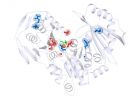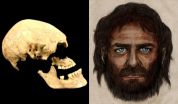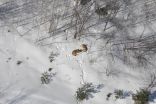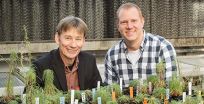Penn-Dresden study blocks multiple sclerosis relapses in mice
2014-11-11
In multiple sclerosis, the immune system goes rogue, improperly attacking the body's own central nervous system. Mobility problems and cognitive impairments may arise as the nerve cells become damaged.
In a new study, researchers from the University of Pennsylvania and co-investigators have identified a key protein that is able to reduce the severity of a disease equivalent to MS in mice. This molecule, Del-1, is the same regulatory protein that has been found to prevent inflammation and bone loss in a mouse model of gum disease.
"We see that two completely different ...
Study identifying cell of origin for large, disfiguring nerve tumors lays groundwork for development
2014-11-11
DALLAS - November 11, 2014 - UT Southwestern Medical Center researchers have determined the specific type of cell that gives rise to large, disfiguring tumors called plexiform neurofibromas, a finding that could lead to new therapies for preventing growth of these tumors.
"This advance provides new insight into the steps that lead to tumor development and suggests ways to develop therapies to prevent neurofibroma formation where none exist today," said Dr. Lu Le, Assistant Professor of Dermatology at UT Southwestern and senior author of the study, published online and ...
Penn Vet team pieces together signaling pathway leading to obesity
2014-11-11
As scientists probe the molecular underpinnings of why some people are prone to obesity and some to leanness, they are discovering that weight maintenance is more complicated than the old "calories in, calories out" adage.
A team of researchers led by the University of Pennsylvania School of Veterinary Medicine's Kendra K. Bence have now drawn connections between known regulators of body mass, pointing to possible treatments for obesity and metabolic disorders.
Their work also presents intriguing clues that these same molecular pathways may play a role in learning ...
Salivary mucins play active role to fight cavities
2014-11-11
Salivary mucins, key components of mucus, actively protect the teeth from the cariogenic bacterium, Streptococcus mutans, according to research published ahead of print in Applied and Environmental Microbiology. The research suggests that bolstering native defenses might be a better way to fight dental caries than relying on exogenous materials, such as sealants and fluoride treatment, says first author Erica Shapiro Frenkel, of Harvard University, Cambridge, MA.
S. mutans attaches to teeth using sticky polymers that it produces, eventually forming a biofilm, a protected ...
This Week From AGU: Volcano hazards and the role of westerly wind bursts in El Niño
2014-11-11
From this week's Eos: Scientists Engage With the Public During Lava Flow Threat
On 27 June, lava from Kīlauea, an active volcano on the island of Hawai`i, began flowing to the northeast, threatening the residents in Pāhoa, a community in the District of Puna, as well as the only highway accessible to this area. Scientists from the U.S. Geological Survey's Hawaiian Volcano Observatory (HVO) and the Hawai`i County Civil Defense have been monitoring the volcano's lava flow and communicating with affected residents through public meetings since 24 August. Eos recently ...
Majority of people -- including health professionals -- struggle to identify obesity
2014-11-11
The majority of people - including healthcare professionals - are unable to visually identify whether a person is a healthy weight, overweight or obese according to research by psychologists at the University of Liverpool.
Researchers from the University's Institute of Psychology, Health and Society asked participants to look at photographs of male models and categorise whether they were a healthy weight, overweight or obese according to World Health Organisation (WHO) Body Mass Index (BMI) guidelines.
They found that the majority of participants were unable to correctly ...
Microtubes create cozy space for neurons to grow, and grow fast
2014-11-11
CHAMPAIGN, Ill. -- Tiny, thin microtubes could provide a scaffold for neuron cultures to grow so that researchers can study neural networks, their growth and repair, yielding insights into treatment for degenerative neurological conditions or restoring nerve connections after injury.
Researchers at the University of Illinois at Urbana-Champaign and the University of Wisconsin-Madison created the microtube platform to study neuron growth. They posit that the microtubes could one day be implanted like stents to promote neuron regrowth at injury sites or to treat disease.
"This ...
Study: Farmers and scientists divided over climate change
2014-11-11
WEST LAFAYETTE, Ind. - Crop producers and scientists hold deeply different views on climate change and its possible causes, a study by Purdue and Iowa State universities shows.
Associate professor of natural resource social science Linda Prokopy and fellow researchers surveyed 6,795 people in the agricultural sector in 2011-2012 to determine their beliefs about climate change and whether variation in the climate is triggered by human activities, natural causes or an equal combination of both.
More than 90 percent of the scientists and climatologists surveyed said they ...
UI researchers find East Coast hurricanes can flood the Midwest
2014-11-11
Located hundreds of miles inland from the nearest ocean, the Midwest is unaffected by North Atlantic hurricanes.
Or is it?
With the Nov. 30 end of the 2014 hurricane season just weeks away, a University of Iowa researcher and his colleagues have found that North Atlantic tropical cyclones in fact have a significant effect on the Midwest. Their research appears in the Bulletin of the American Meteorological Society.
Gabriele Villarini, UI assistant professor of civil and environmental engineering, studied the discharge records collected at 3,090 U.S. Geological Survey ...
MU researchers offer first analysis of new human glucose disorder
2014-11-11
COLUMBIA, Mo. - Glycogen storage disorders, which affect the body's ability to process sugar and store energy, are rare metabolic conditions that frequently manifest in the first years of life. Often accompanied by liver and muscle disease, this inability to process and store glucose can have many different causes, and can be difficult to diagnose. Now, researchers at the University of Missouri who have studied enzymes involved in metabolism of bacteria and other organisms have catalogued the effects of abnormal enzymes responsible for one type of this disorder in humans. ...
Supercomputing beyond genealogy reveals surprising European ancestors
2014-11-11
What if you researched your family's genealogy, and a mysterious stranger turned out to be an ancestor?
That's the surprising feeling had by a team of scientists who peered back into Europe's murky prehistoric past thousands of years ago. With sophisticated genetic tools, supercomputing simulations and modeling, they traced the origins of modern Europeans to three distinct populations.
The international research team published their September 2014 results in the journal Nature.
XSEDE, the Extreme Science and Engineering Discovery Environment, provided the computational ...
Novel molecular imaging drug offers better detection of prostate cancer
2014-11-11
Reston, Va. (November 11, 2014) - A novel study demonstrates the potential of a novel molecular imaging drug to detect and visualize early prostate cancer in soft tissue, lymph nodes and bone. The research, published in the November issue of the Journal of Nuclear Medicine, compares the biodistribution and tumor uptake kinetics of two Tc-99m labeled ligands, MIP-1404 and MIP-1405, used with SPECT and planar imaging.
Prostate cancer is the most commonly diagnosed non-skin cancer in the United States, and it is second only to lung cancer as the leading cause of cancer ...
Study finds traditional healers contribute to HIV care delays
2014-11-11
If you're a native of rural Mozambique who contracts HIV and becomes symptomatic, before seeking clinical testing and treatment, you'll likely consult a traditional healer.
Your healer may well conclude that your complaints are caused by a curse, perhaps placed upon you by a neighbor or by the spirit of an ancestor. To help you battle your predicament, the healer will likely cut your skin with a razor blade and rub medicinal herbs into the cut.
A recent survey of symptomatic HIV-positive people in rural Mozambique, led by Carolyn Audet, Ph.D., M.A., assistant professor ...
HIV-infected adults diagnosed with age-related diseases at similar ages as uninfected
2014-11-11
New research from the Johns Hopkins Bloomberg School of Public Health suggests that HIV-infected adults are at a higher risk for developing heart attacks, kidney failure and cancer. But, contrary to what many had believed, the researchers say these illnesses are occurring at similar ages as adults who are not infected with HIV.
The findings appeared online last month in the journal Clinical Infectious Diseases.
Researchers say these findings can help reassure HIV-infected patients and their health care providers.
"We did not find conclusive evidence to suggest that ...
Why 'I'm so happy I could cry' makes sense
2014-11-11
New Haven, Conn.--The phrase "tears of joy" never made much sense to Yale psychologist Oriana Aragon. But after conducting a series of studies of such seemingly incongruous expressions, she now understands better why people cry when they are happy.
"People may be restoring emotional equilibrium with these expressions," said Aragon, lead author of work to be published in the journal Psychological Science. "They seem to take place when people are overwhelmed with strong positive emotions, and people who do this seem to recover better from those strong emotions."
There ...
Attitudes about knowledge and power drive Michigan's wolf debate
2014-11-11
With both wolf proposals shot down by Michigan voters on election day, the debate over managing and hunting wolves is far from over.
A Michigan State University study, appearing in a recent issue of the Journal of Wildlife Management, identifies the themes shaping the issue and offers some potential solutions as the debate moves forward.
The research explored how different sides of the debate view power imbalances among different groups and the role that scientific knowledge plays in making decisions about hunting wolves. These two dimensions of wildlife management ...
Federal legislation ignores PTSD toll on civilians
2014-11-11
PHILADELPHIA (Nov. 11, 2014) - Federal laws explicitly addressing post-traumatic stress disorder (PTSD) have overwhelmingly focused on the needs of military personnel and veterans, according to a new analysis published in the Journal of Traumatic Stress.
The study, authored by Jonathan Purtle, DrPH, an assistant professor at the Drexel University School of Public Health, is the first to examine how public policy has been used to address psychological trauma and PTSD in the U.S., providing a glimpse of how lawmakers think about these issues.
Purtle found that in federal ...
Some plants regenerate by duplicating their DNA
2014-11-11
CHAMPAIGN, Ill. -- When munched by grazing animals (or mauled by scientists in the lab), some herbaceous plants overcompensate - producing more plant matter and becoming more fertile than they otherwise would. Scientists say they now know how these plants accomplish this feat of regeneration.
They report their findings in the journal Molecular Ecology.
Their study is the first to show that a plant's ability to dramatically rebound after being cut down relies on a process called genome duplication, in which individual cells make multiple copies of all of their genetic ...
Tracing the course of phosphorus pollution in Lake Pepin
2014-11-11
November 11, 2014--In recent years, many lakes in the upper Midwest have been experiencing unprecedented algae blooms. These blooms threaten fish and affect recreational activities. A key culprit implicated in overgrowth of algae in lakes is phosphorus (P). Lake Pepin, located on the Minnesota/Wisconsin border, has seen increasing phosphorus concentrations over time. Researchers are now trying to identify upstream factors that could explain this increase.
Satish Gupta, a University of Minnesota professor, and Ashley Grundtner, recently published a paper about their research ...
Tail discovered on long-known asteroid
2014-11-11
Washington, D.C.--A two-person team of Carnegie's Scott Sheppard and Chadwick Trujillo of the Gemini Observatory has discovered a new active asteroid, called 62412, in the Solar System's main asteroid belt between Mars and Jupiter. It is the first comet-like object seen in the Hygiea family of asteroids. Sheppard will present his team's findings at the American Astronomical Society's Division of Planetary Sciences meeting and participate on Tuesday, November 11, in a press conference organized by the society.
Active asteroids are a newly recognized phenomenon. 62412 ...
Fast-food outlets in inner city neighborhoods fuel diabetes and obesity epidemic
2014-11-11
How close you are to fast-food outlets may be linked to your risk of Type-2 diabetes and obesity a new study led by the University of Leicester has discovered.
The research found that there was a higher number of fast-food outlets within 500 metres of inner-city neighbourhoods described as non-white as well as in socially deprived areas.
The researchers warn that their findings, based on a study of over 10,000 people, have important implications for diabetes prevention and for those granting planning permission for fast-food outlets.
"Our study suggests that for every ...
The oceans' sensitive skin
2014-11-11
Like a skin, the sea-surface microlayer separates the ocean from the atmosphere. The exchange of gases and the emission of sea-spray aerosols - two functions that are crucial for climate - take place in this boundary film. A mesocosm experiment by scientists from GEOMAR Helmholtz Centre for Ocean Research Kiel, Alfred Wegener Institute, Helmholtz Centre for Polar and Marine Research Bremerhaven (AWI) and the Institute for Baltic Sea Research Warnemünde (IOW) reveals for the first time how ocean change might affect the special physical, chemical and biological characteristics ...
UEA research shows lung disease case finding in pharmacies could save £264 million
2014-11-11
Using community pharmacies to identify undiagnosed cases of chronic obstructive pulmonary disease (COPD) at an early stage could save £264 million a year according to new research from the University of East Anglia (UEA).
A report published today shows the value of pharmacies in addressing diseases at an early stage. It reveals that case-finding would provide "significant NHS and societal benefits" and save the NHS more money than the service costs to deliver.
The research shows that more than half (57 per cent) of people screened by pharmacies were identified ...
Tool created to help multinational companies assess risk of bribery when doing business in foreign countries
2014-11-11
A tool to help multinational companies assess the business bribery risks faced when conducting business in foreign countries and tailor compliance policies to address those threats has been created by researchers from the RAND Corporation and TRACE International.
Called the TRACE Matrix, the tool improves upon previous methods of risk assessment by incorporating approaches that are better designed to help businesses predict bribery risk and similar threats, researchers say. The tool is free and is available on the TRACE International website.
Researchers say corruption ...
When bone density is good, no repeat tests needed for younger postmenopausal women
2014-11-11
CLEVELAND, Ohio (Monday, November 10, 2014)--After menopause and before age 65, women who have normal bone density have a very low risk of fracture, shows a new study from the Women's Health Initiative (WHI) published online in Menopause, the journal of The North American Menopause Society. That means these women don't need another bone mass density (BMD) test before age 65.
This study followed up 4,068 postmenopausal women ages 50 to 64 who had a BMD test, weren't taking hormones or calcium and vitamin D supplements in the trial, and didn't already have an osteoporotic ...
[1] ... [3071]
[3072]
[3073]
[3074]
[3075]
[3076]
[3077]
[3078]
3079
[3080]
[3081]
[3082]
[3083]
[3084]
[3085]
[3086]
[3087]
... [8691]
Press-News.org - Free Press Release Distribution service.











